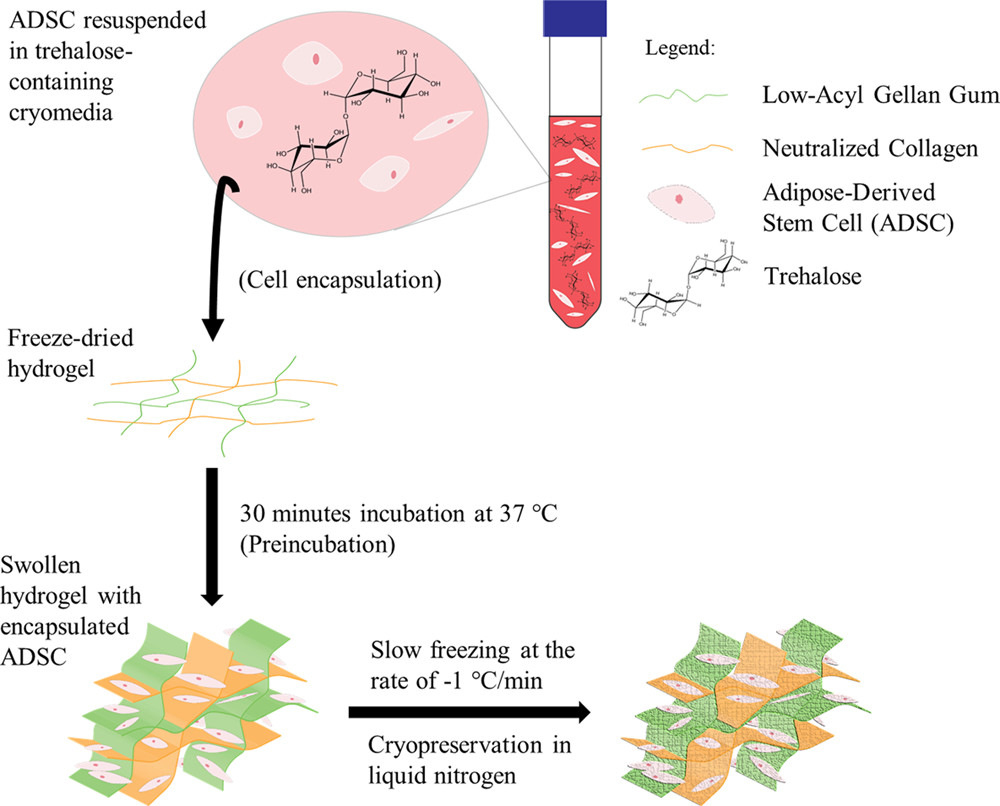Tissue engineering involves the transplantation of stem cell-laden hydrogels as synthetic constructs to replace damaged tissues. However, their time-consuming fabrication procedures are hurdles to widespread application in clinics. Fortunately, similar to cell banking, synthetic tissues could be cryopreserved for subsequent central distribution.

Schematic Representation of the Fabrication and Cryopreservation of Trehalose-Infused ADSC-Laden Gellan Gum–Collagen Hydrogels
Read this paper that reports the use of trehalose and gellan gum as biomacromolecules to form a cryopreservable yet directly implantable hydrogel system for adipose-derived stem cell (ADSC) delivery. Through a modified cell encapsulation method and a preincubation step, adequate cryoprotection was afforded at 0.75 M trehalose to the encapsulated ADSCs. At this concentration, trehalose demonstrated a lower propensity to induce apoptosis than 10% DMSO, the current gold standard cryoprotectant. Moreover, when cultured along with trehalose after thawing, the encapsulated ADSCs retained their stem cell-like phenotype and osteogenic differentiation capacity.
